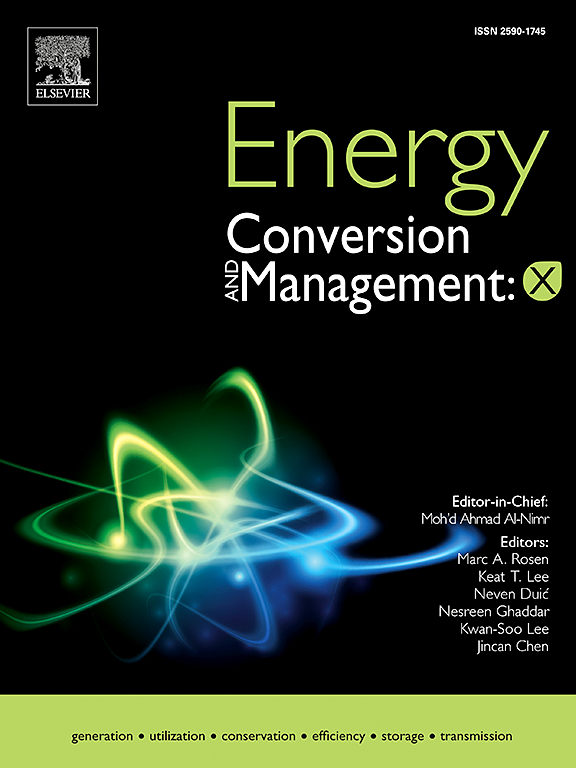Reducing carbon footprint in ports through electrification and flexible energy management of ships
IF 9.9
1区 工程技术
Q1 ENERGY & FUELS
引用次数: 0
Abstract
The environmental impact of maritime transport has become a central concern for the international community. The Carbon Intensity Indicator and the Emissions Trading System are key mechanisms pushing the shipping sector towards more sustainable and less polluting solutions, including the adoption of alternative technologies to diesel generators and the reduction of heavy fuel oil employment. Port areas are particularly controlled, as the environmental impact of shipping operations affects both the environment and human-inhabited areas. Given that the electrification of ports (cold ironing) is not yet widespread globally, this work proposes an on-board poly-generation system equipped with high-temperature proton exchange membrane fuel cells and batteries to meet energy demands during entry, dock, and exit from port areas. Various operational strategies (rule-based energy system management) for managing on-board technologies are analysed, offering a range of potential applications based on the on-board availability of hydrogen and battery discharge modes, with the aim of reducing the ship’s environmental impact in port areas. Additionally, to fully electrify the poly-generation system, this study explores replacing auxiliary oil-fired boilers with heat pumps for steam production, integrating this technology into the low-temperature engine cooling circuit to enhance energy efficiency and eliminate emissions from auxiliary systems. By implementing these technologies alongside the developed operational strategies, it is possible to achieve an 80–90% reduction in carbon dioxide emissions in the port area, improving the carbon intensity indicator by 4.74%, from 11.06 to 10.38.
通过船舶电气化和灵活的能源管理减少港口的碳足迹
海运对环境的影响已成为国际社会关注的中心问题。碳强度指标和排放交易系统是推动航运业走向更可持续、污染更少的解决方案的关键机制,包括采用柴油发电机的替代技术和减少重燃料油的就业。港口地区受到特别控制,因为航运作业对环境的影响既影响到环境,也影响到人类居住的地区。鉴于港口电气化(冷熨)尚未在全球范围内普及,本研究提出了一种配备高温质子交换膜燃料电池和电池的车载多联产系统,以满足港口区域进入、停靠和离开期间的能源需求。分析了管理船上技术的各种操作策略(基于规则的能源系统管理),根据船上氢气的可用性和电池放电模式提供了一系列潜在的应用,目的是减少船舶对港口地区的环境影响。此外,为了使多联产系统完全电气化,本研究探索用热泵代替辅助燃油锅炉以产生蒸汽,并将该技术集成到低温发动机冷却回路中,以提高能源效率并消除辅助系统的排放。通过实施这些技术以及制定的运营战略,有可能实现港区二氧化碳排放量减少80-90%,将碳强度指标从11.06提高到10.38,提高4.74%。
本文章由计算机程序翻译,如有差异,请以英文原文为准。
求助全文
约1分钟内获得全文
求助全文
来源期刊

Energy Conversion and Management
工程技术-力学
CiteScore
19.00
自引率
11.50%
发文量
1304
审稿时长
17 days
期刊介绍:
The journal Energy Conversion and Management provides a forum for publishing original contributions and comprehensive technical review articles of interdisciplinary and original research on all important energy topics.
The topics considered include energy generation, utilization, conversion, storage, transmission, conservation, management and sustainability. These topics typically involve various types of energy such as mechanical, thermal, nuclear, chemical, electromagnetic, magnetic and electric. These energy types cover all known energy resources, including renewable resources (e.g., solar, bio, hydro, wind, geothermal and ocean energy), fossil fuels and nuclear resources.
 求助内容:
求助内容: 应助结果提醒方式:
应助结果提醒方式:


